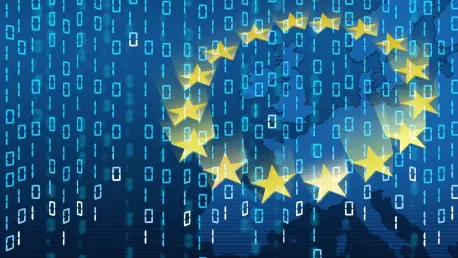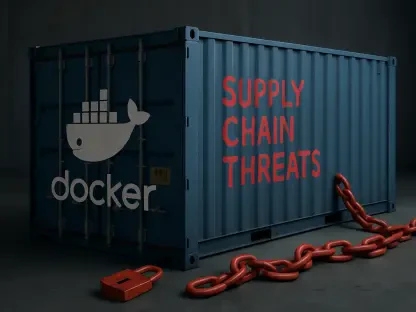In the ever-evolving landscape of cloud computing, Maryanne Baines stands as a leading authority. Her experience evaluating various cloud providers makes her insights invaluable, especially as European organizations reconsider their cloud service strategies amidst concerns over data privacy and international reliance. In today’s conversation, Maryanne shares her thoughts on the shifting dynamics in the cloud computing industry.
What were the main topics discussed at this year’s Nextcloud summit concerning cloud services?
The Nextcloud summit delved deeply into the viability of migrating workloads away from US hyperscalers. The discussions emphasized not just the possibility but the necessity of doing so to mitigate risks associated with unpredictable political climates and data sovereignty issues. European cloud providers argued that failing to consider these risks would be negligent for IT leaders.
Why are European organizations reconsidering their reliance on US hyperscalers?
European organizations are becoming increasingly wary of the unpredictability of the US administration, which impacts trust and data privacy concerns. There’s a growing fear that being tied to US-based cloud services exposes them to risks that could compromise their data sovereignty and business operations.
How have US hyperscalers like Microsoft, Google, and AWS responded to the concerns over data privacy and sovereignty?
US hyperscalers have acknowledged these concerns by enhancing their sovereign cloud services. For instance, Microsoft has assured it would resist governmental pressures to access customer data, and AWS plans to develop an independent EU cloud unit to address these sovereignty fears, highlighting their commitment to minimizing risks for European clients.
Could you explain what “sovereignty washing” is in the context of cloud services?
“Sovereignty washing” refers to the superficial solutions by which some cloud providers claim local data control without truly ensuring independence from US influence. This might involve local subsidiaries that are promoted as European but still fundamentally tied to US oversight, leading to potential trust issues.
What arguments do skeptics use to claim that moving away from a US cloud operator is almost impossible?
Skeptics often argue that the comprehensive services and unmatched data center capacities of US hyperscalers are currently unparalleled by EU providers. They suggest that the scale and innovation of US giants are difficult to match, making a complete shift challenging.
How do open source organizations and EU cloud vendors respond to the claim that EU datacenter capacity cannot compete with US giants?
Organizations like Nextcloud and the Open Infrastructure Foundation refute these claims, stating that EU datacenters are more than capable, especially for the average customer needs. They stress that the scale required by most businesses doesn’t necessarily demand the vast capabilities of US hyperscalers.
Can you elaborate on the stance that scalability is a “non-issue” for European cloud providers like IONOS?
For IONOS, scalability isn’t a problem because most client needs are well within their capacity. They maintain adequate spare resources and are planning further expansions. Typically, clients aren’t looking for excessive scaling, and their existing infrastructure can efficiently manage demands like 5,000 to 10,000 cores.
What sort of customers and workloads does IONOS typically handle?
IONOS accommodates a range of clients with diverse workloads, predominantly small to medium enterprises looking for scalable yet manageable solutions. They focus on providing reliable services for applications that need between a few hundred to several thousand computing cores.
How does IONOS ensure it maintains enough spare capacity for its clients?
IONOS has a strategic policy to always maintain spare capacity beyond current needs, ensuring they can accommodate increasing demands without compromising service quality. This proactive approach allows them to offer stability and scalability, even for unexpected surges.
What changes have recently led businesses to consider moving away from US hyperscalers?
A significant shift has been prompted by growing data privacy concerns and the realization that US political shifts pose direct risks to data sovereignty. Businesses have started to see these factors as critical considerations, leading them to explore alternative cloud solutions more seriously.
Can you provide examples or insights into the types of organizations currently inquiring about or moving to European cloud services?
We’re seeing a trend where various sectors, including public institutions and NGOs, are keen on exploring European options due to compliance and sovereignty issues. This growing interest underscores a shift toward local cloud services that promise greater data control.
What have other cloud providers and software vendors said about the increasing interest in hyperscaler alternatives?
Industry leaders from companies like the Open Infrastructure Foundation have noted a significant uptick in interest for alternatives, indicating a broader market shift. The pace at which inquiries are rising suggests a substantial reevaluation of cloud provider strategies across the board.
Are there any particular sectors, like public or private, showing more interest in switching to European cloud services?
Public sector organizations, due to regulatory requirements, are increasingly moving to European cloud services. However, we are also witnessing the private sector’s growing interest, as they become more aware of and responsive to privacy and sovereignty issues.
How do regulatory or privacy concerns influence the decision-making process for organizations considering a switch from US to European cloud providers?
Regulatory compliance and privacy concerns are pivotal factors driving organizations to reconsider their cloud provider choices. European regulations, like GDPR, emphasize data protection and independence, pushing companies to align their strategies with local providers that can guarantee compliance.
What timelines do you anticipate for companies making the switch, and what does the typical sales cycle look like in this context?
The transitions tend to unfold over three to six quarters, particularly in the private sector. This extended sales cycle allows organizations to meticulously evaluate options, ensuring that their shift to European providers aligns with their long-term strategic goals.









